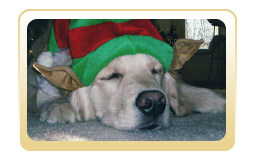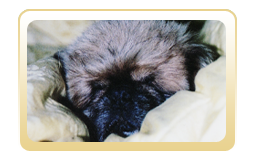| |
VETERINARY ACUPUNCTURE
According to ancient Chinese
medical philosophy, disease is the result of an imbalance
of energy in the body. Acupuncture is a deep healing
modality which uses the insertion of hair-fine needles
to stimulate specific points along the body's energy fields.
This allows energy in the body to find its proper balance
thereby producing the desired healing effect. Acupuncture
has been used in veterinary practice in China for at least
3,000 years to treat many ailments. It is now used all
over the world. Modern veterinary acupuncturists use solid
needles, hypodermic needles, bleeding needles, electricity,
heat, massage, and low powered lasers to stimulate acupuncture
points.
Acupuncture is indicated mainly for functional problems
such as those that involve paralysis, allergies, and pain. In small animals
the following medical conditions may benefit from acupuncture: arthritis, asthma,
vertebral disc disease, hip dysplasia, elbow dysplasia, post-op orthopedic
surgeries, lick granulomas, chronic vomiting or diarrhea, epilepsy, diabetes,
liver disease, Cushing's disease, and some skin disorders. Acupuncture helps
to promote healing by stimulating nerves, increasing blood circulation, relieving
muscle spasms, and causing the release of hormones such as endorphins. Many
of acupuncture's physiological effects have been studied and others are still
left to be discovered.
Many pet owners worry that acupuncture may be painful
to their pet. For small animals, the insertion of acupuncture needles is virtually
painless. Most animals become very relaxed and may even become sleepy during
treatment. Some sensation is assumed to occur such as tingles, numbness, or
cramps. Acupuncture is one of the safest forms of medical treatment when it
is administered by a properly trained veterinarian. Side effects are rare but
they do occur. An animal's condition may seem worse for 24-48 hours after treatment.
These effects are an indication that some physiological changes are developing,
and they are most often followed by improvement.
The length and frequency of acupuncture treatments
depends on the condition of the patient and the method of stimulation that
is used by the veterinarian. A simple acute problem, such as a sprain, may
require only one treatment. Chronic diseases may require several or even several
dozen treatments. When multiple treatments are needed they usually begin intensively
and are tapered to maximum efficiency. Patients often start with 1-3 treatments
per week for 4-6 weeks. A positive response is usually seen after the first
week. Once a maximum positive response is achieved, treatments are tapered
off so that the greatest amount of symptom-free time elapses between them.
Many animals with chronic disease can taper off to 2-4 treatments per year.
There are two important criteria
you should look for in choosing a veterinary acupuncturist.
The person should be a licensed veterinarian. Secondly, the
veterinarian should have formal training in the practice
of acupuncture on small animals and be certified by IVAS
(International Veterinary Acupuncture Society). In most countries
and states veterinary acupuncture is considered a surgical
procedure that only a licensed veterinarian may legally administer.
The AVMA considers veterinary acupuncture a valid modality
within the practice of veterinary medicine and surgery, but
extensive educational programs should be undertaken before
a veterinarian is considered competent to practice acupuncture. |
|
|
|







